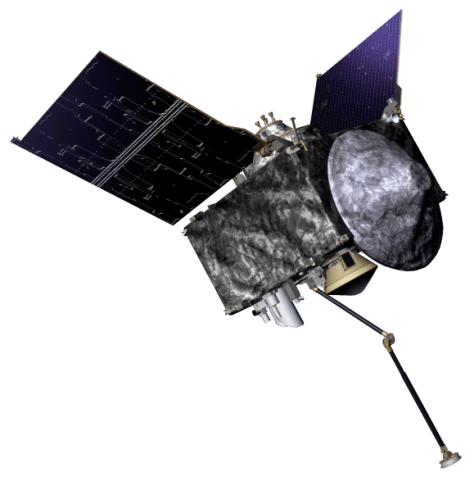
Update: On 20 October 2020, after a four-year journey, OSIRIS-REx is expected to obtain a sample of at least 60 grams (2.1 oz) from 101955 Bennu, a carbonaceous near-Earth asteroid, and return the sample to Earth for a detailed analysis. Below, you can learn about the volunteers who help document space exploration on Wikipedia.
Sometime between 7:05pm and 9:05pm EDT tonight, NASA will launch OSIRIS-REx—a spacecraft that will travel to the asteroid 101955 Bennu.
Wikipedia tells us that if its four-year journey goes as planned, it will be the first spacecraft to bring asteroid samples back to Earth for study. Furthermore, this mission, the third in the space agency’s New Frontiers program (behind Juno and New Horizons), will help us gain a greater understanding of the formation and evolution of the Solar System.
“Astronomers are currently functioning with a model called ‘accretion‘ that attempts to explain the formation of the Solar System,” says Wikipedia editor BatteryIncluded.
“There is very little known, and many hypotheses are advanced. The fact is that the current accretion model cannot explain many phenomena we see today in other solar systems, stars and galaxies, so any in-situ data [like that OSIRIS-REx will obtain] is useful.”
BatteryIncluded and fellow editor Hadron137 have worked on the OSIRIS-REx and Bennu articles. More broadly, they are two of many people who work on Wikipedia’s space-related articles, a topic which has no less than three devoted WikiProjects (focusing on spaceflight, the solar system, and astronomy). Hadron says that many are not experts on the topic, but that isn’t necessarily a negative:
“I don’t think a person needs to … have spacecraft-specific knowledge to contribute; that’s what’s so cool about Wikipedia. It just takes a bit of curiosity. I often read a paragraph in Wikipedia about the spacecraft and it gets me thinking about ‘how does that work,’ or ‘why do they do it like that’? Then I research the answer in credible publications and add the content to Wikipedia.”

This cohort of editors is quick to jump on breaking space stories that are covered in reliable sources; on 25 August, for instance, minutes to hours after scientists announced in Nature that they had found an exoplanet orbiting Alpha Proxima, Wikipedia had a comprehensive article.
But if you do have some knowledge of chemistry, physics, planetary science, or any related field, and you’ve been looking for a good place to jump in and contribute to Wikipedia, your easiest opening may be in the years after these events, when scientists begin to relate what we’ve learned from these missions.
As BatteryIncluded related to us, “In Wikipedia we can do better in highlighting that every space probe is more of a scientific ‘mission’ than a flight, particularly with sample-return missions” like OSIRIS-REx. “I tend to revisit old articles and add the most relevant scientific results, which are overlooked by most other Wikipedia editors. … Explaining the mission [in simple terms and in the] context of the objectives is important.”
Ed Erhart, The Wikimedia Foundation

Can you help us translate this article?
In order for this article to reach as many people as possible we would like your help. Can you translate this article to get the message out?
Start translation